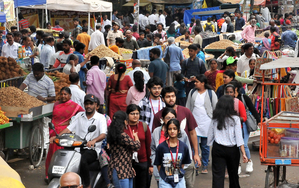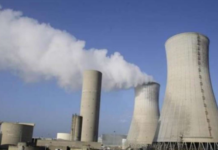New Delhi– The latest household consumer expenditure survey indicates that India’s poverty level has fallen below 5 per cent and people are becoming more prosperous both in the rural and urban areas, NITI Aayog CEO B.V.R. Subrahmanyam said on Sunday.
The per capita monthly household expenditure more than doubled in 2022-23 as compared to 2011-12 reflecting the rising level of prosperity in the country, according to data released by the National Sample Survey Office (NSSO) late on Saturday.
“The consumer expenditure survey also reflects the success of the poverty alleviation measures taken by the government,” Subrahmanyam told journalists.
He said that the survey, grouped the population into 20 different categories and the data showed that the average per capita monthly expenditure for all categories stood at Rs 3,773 in rural areas and Rs 6,459 in urban areas.
The average per capita monthly expenditure of the bottom 0-5 per cent class is pegged at Rs 1,373 in rural areas and Rs 2,001 in urban areas.
“If we take the poverty line and inflate it with the Consumer Price Index (CPI) to today’s rate, we see that the average consumption of the lowest 0-5 per cent class, is about the same. This means that poverty in the country is only in the 0-5 per cent group,” the NITI Aayog CEO said.
“This is my assessment. But economists will analyse it and come out with absolutely correct numbers,” he added.
The NSSO estimates are based on data collected from 1.55 lakh rural households and 1.07 lakh urban households.
Subrahmanyam said the data showed that the consumption both in rural and urban areas has shot up about 2.5 times.
“This shows that the progress in the country is happening in both urban and rural areas,” he pointed out.
The survey also shows that consumption in rural areas is growing faster than urban areas, thus narrowing the disparities between the two segments, Subrahmanyam said.
The survey also factors in the benefit of government welfare schemes which have contributed to the consumption of poor households who have received free foodgrains and goods such as bicycles and school uniforms for their children.
The survey shows that the gap was 84 per cent in 2011-12 and has come down to 71 per cent in 2022-23. The gap was at its peak of 91 per cent in 2004-05.
The NSSO survey also indicates a significant fall in the share of consumption of cereals and food in the total expenditure of both rural and urban households in the country.
“This means people are becoming prosperous with extra income. And with this increased prosperity, they are spending more on other things than food. Even in food, they are drinking more milk, eating fruits and more vegetables,” he said.
Subrahmanyam also said: “The contribution of food to CPI inflation will be lower and probably was lower in earlier years also. This means inflation was being overstated and is probably less as food has been a major contributor to inflation.” (IANS)







